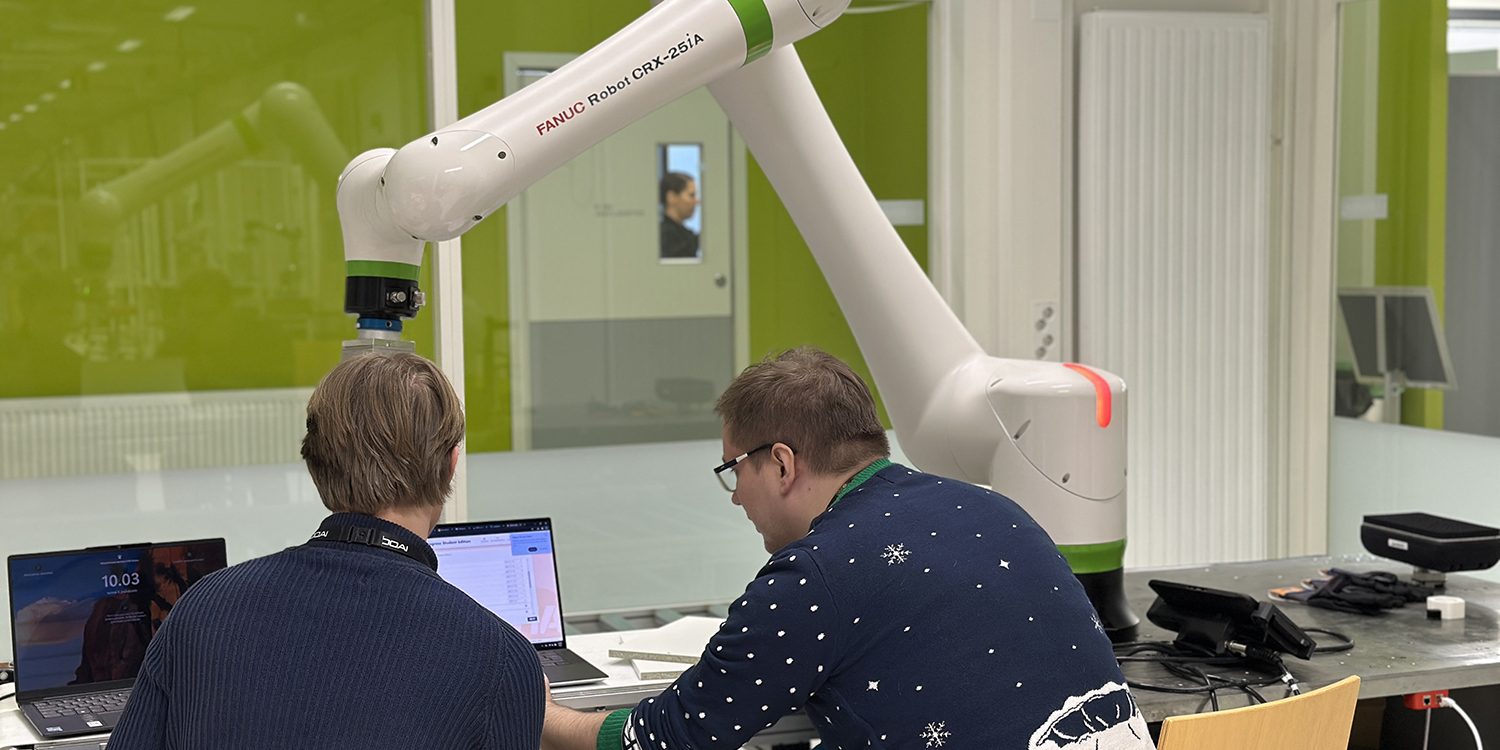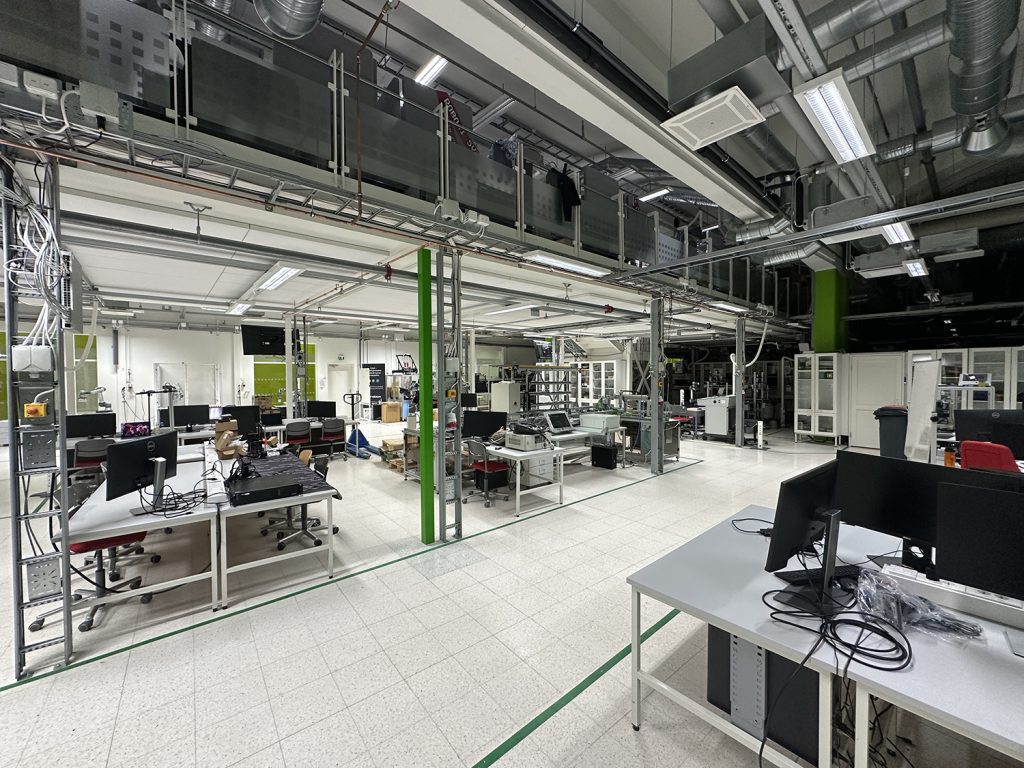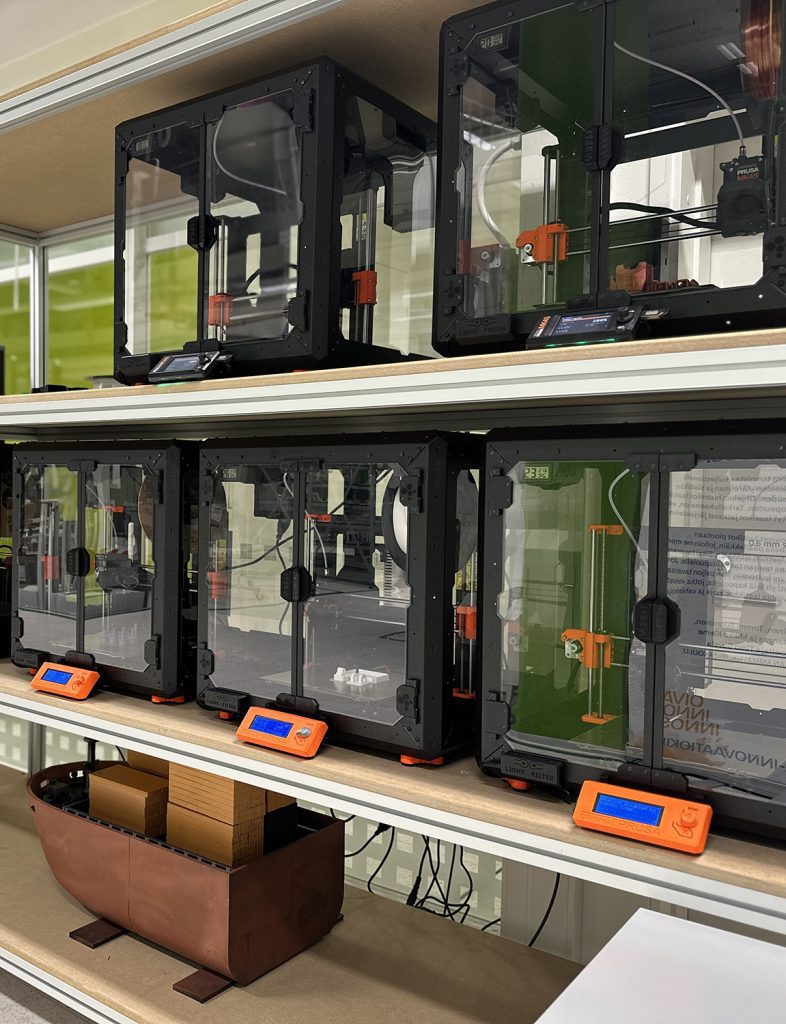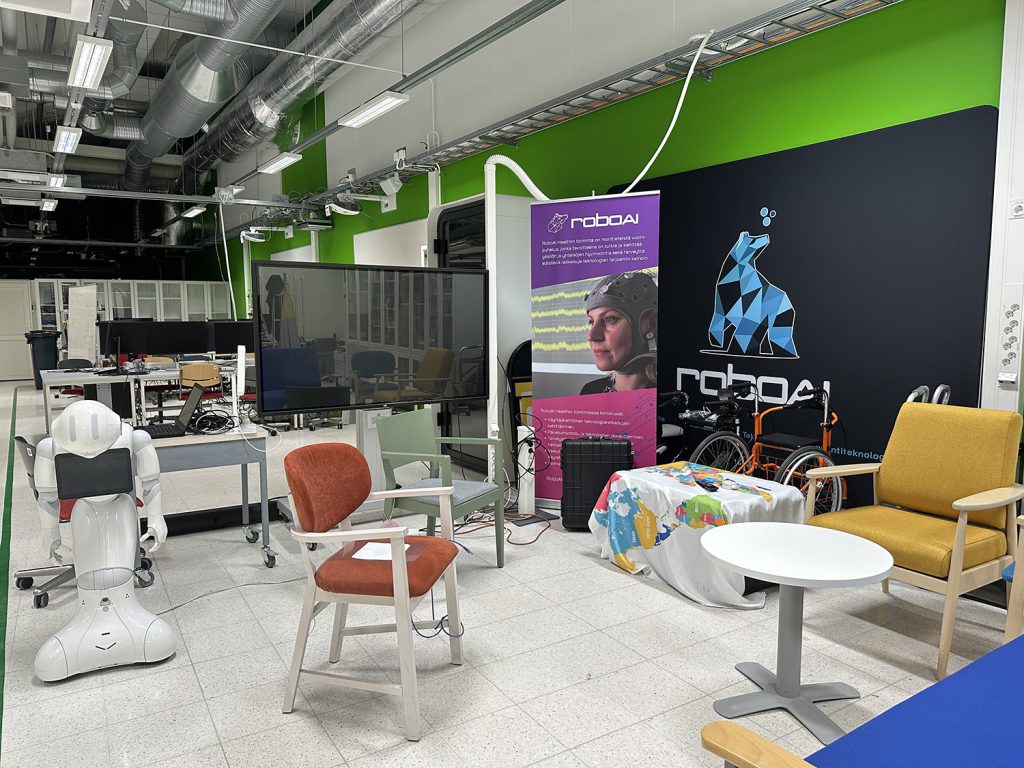The RoboAI joint use laboratory has seen a significant increase in activity over the years, so the space has undergone extensive renovation work this year. SAMK invested 170,000 € in the development of the laboratory's teaching, and 450,000 € in investment funding was provided by the Cobot and Robofleet projects.


– The RoboAI Academy grew from 20 to 30 students and expanded significantly into artificial intelligence. In addition, the teaching of robotics was extended to students of mechatronics and the University of Vaasa, among others, and these changes forced the lab to become more functional. We also wanted more space to allow mobile robots to operate independently and transport goods between arm robots, says Pekka Suominen, RoboAI's Research Manager.
Redesigning the lab layout - more space and functionality
The biggest single change was the reorganisation of the teaching of automation technology. This involved moving the 24-station teaching room from the laboratory to a new space in the A wing of the Pori campus. A new layout plan was made for the laboratory and the more functional and looser space is now divided into different areas, for example from the robotics corridor to the RoboAI Academy workspace. The large windows in the lab are now better utilised: the visual impact and visibility was increased by placing, for example, collaborative robots and machine vision equipment in front of them. This gives everyone the opportunity to be inspired by technology.
RoboAI Health, which focuses on health and wellbeing technology, was given its own area in the lab, where a 'lending room' for equipment and goods in this field would be set up. This equipment could be loaned for testing or demonstrations, for example to companies or educational institutions. The 3D printing area was also renovated. The space was cleaned up, new printers were purchased and cabinets with fine particle filters were installed.
Technological purchases research and business cooperation

Investment projects include welding robotics, machine vision technology, mobile robotics and industrial exoskeletons. Researchers are particularly interested in the sensor data generated by artificial intelligence used with active exoskeletons and the possibility to anticipate the needs of the exoskeleton operator, for example during installation work.
Suominen considers it very important that the laboratory always has the latest equipment and technologies that can be used for the benefit of Satakunta's industry. Then there is never a shortage of partners; companies ask experts to apply the equipment to their own needs. According to Suominen, cooperation with companies is becoming increasingly popular, and sometimes it is even necessary to refuse when a project cannot be completed within the timeframe the company wants.
The RoboAI Academy's project-based business cooperation has gained a foothold in companies in Satakunta and the students' testing, simulation and product development services have been put to good use.
– Satakunta companies could benefit even more from free AI tools, for example, but there is not necessarily product support or helpdesks to support their use. We can help with the implementation so that, for example, as few risks as possible are taken on the production line, Suominen points out.
Visits are on the increase - demonstrations are becoming easier to organise

– More than a thousand visitors come to the laboratory every year and the number is growing. It is particularly important to raise the technological awareness of children and young people. The new layout changes have made it easier to organise visits and video screens have been added to support them. We are developing the laboratory demonstrations so that anyone can give an automated tour to their group, which will also ease the workload of the team, says Suominen.
Laboratory engineer Juho Kortetmäki, who took up his post in the spring, has been at the heart of the changes. He praises the RoboAI team's willingness to participate in the development work.
– This redesign project was a joint effort. It was great to see how the lecturers in the RoboAI team in particular wanted to contribute and were interested in making the space as functional as possible. The students from the RoboAI Academy were also there to help, especially with the reuse of the older robots, says Kortetmäki.
Find out more about investment projects:

